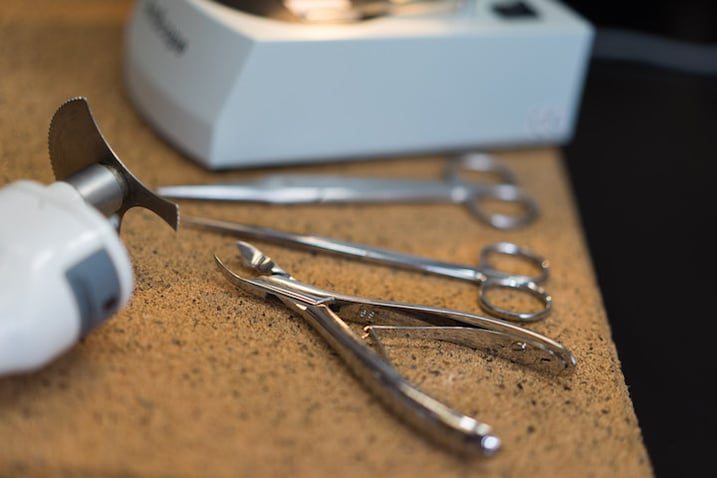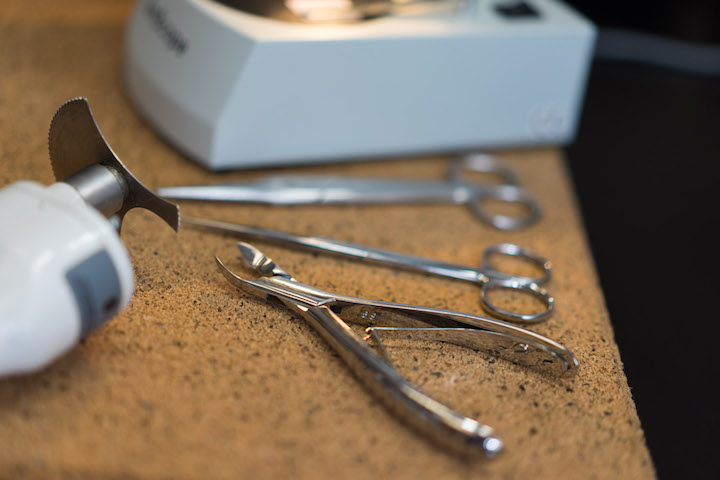
The objective of the necropsy is to examine the animal macroscopically, identifying any lesions that may help the pathologist diagnose what may have been taking place within the body before the time of death. The prosector will dissect the tissues from the animal and place them in fixative for histology. Once slides have been prepared, the study pathologist evaluates the slides and explains clinical and laboratory findings that may have been found in specific organs. Use of careful and attentive necropsy techniques will yield the most accurate interpretation of results and will ensure that clinically relevant observations are not overlooked.
It is essential that the technician performing the necropsy be properly trained and experienced with the species and tissues being examined. The following steps provide an outline of critical techniques to be implemented for the highest quality results.
Preparation for the procedure
Some of the most important steps to achieving proper necropsy techniques come prior to the day of the necropsy. Below, you’ll find a list of procedures one should follow for a successful necropsy:
- The lead prosector should read the study protocol and amendments well in advance of the necropsy. This person should meet with all parties involved in the necropsy and roles should be defined.
- Each prosector should be well-versed in the facility’s Standard Operating Procedures for the necropsy.
- Necropsy forms should be prepared for each animal.
- Ensure instruments are clean and sharp. The following is a brief list of tools that should be available and easily accessible during the procedure:
- Personal protective equipment (gloves, safety glasses and lab coat, at a minimum)
- Scalpel, new blades
- Tissue forceps and scissors
- Saw, Rongeurs, shears
- Ruler, scale and weigh boats
- Necropsy First Aid Kit
- Prepare all other necessary solutions, reagents and fixatives as well as any other materials that will be required. Consumables that will be of use for a necropsy include:
- Fixative(s) of choice
- Microscope slides and paint brushes (for preparing bone marrow smears)
- Phosphate Buffered Saline (PBS)
- 100% Methanol
It is a good idea to keep a list of compulsory materials on-hand and verify that all items are stocked and clean before scheduling the necropsy procedure.
Carefully conducting the necropsy
- Verify that the animal matches the data report and note the unique identifier (ear tag, tattoo, microchip, etc), species, breed, sex, age and weight (if possible) on the necropsy record.
- Visually inspect the animal for any lesions, comparing to the last clinical observations. Examine the skin and hair for lesions, injury, etc. Look for any discharges from body orifices, paying special attention to the eyes, ears and other mucous membranes.
- Remove organs systematically - the order of tissue removal/dissection should be driven by the facility’s SOPs. Take time to properly remove fat and connective tissue from organs prior to weighing to ensure the most accurate weight. Keep weighed tissues wet with saline or a comparable liquid.
- If abnormalities are noted during dissection, they should be annotated on the necropsy record with reference to location, size and color. These observations are not intended to diagnose, but should be accurate representations of visual changes.
- Always make sure the tissue is placed into a fixative as quickly as possible to prevent autolysis. It is also essential that all tissue is exposed to the fixative. Organs may be opened to expose lumen and serosa surfaces equally to the fixative.
- After all tissues for an animal have been placed in fixative and all annotations on the necropsy record have been verified as accurate and complete, the study pathologist or prosector(s) should initial and date the appropriate forms.
- Clean the workspace between each animal. If it is a primate necropsy, it is suggested to spray instruments and workplace down with a disinfectant, such as bleach.
- At the end of each day, prosectors should take care to clean all instruments and thoroughly clean all work areas.
---
Methodical, consistent technique is the key to high quality necropsy and provides the most reliable pathological results possible. If you are in need of a necropsy team to come to your facility to help your team OR if you need an ACVP Veterinary Pathologist to manage your necropsy, please visit www.hsrl.org.

